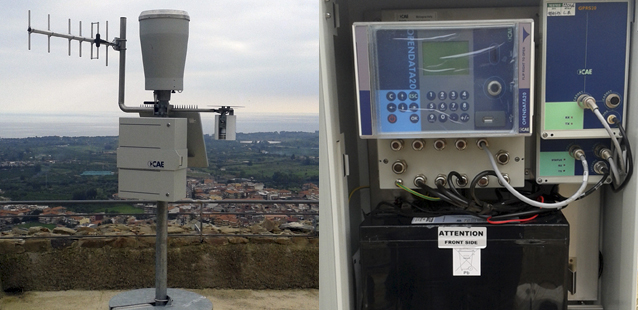Messina calls, CAE answers in less than 24 hours
December 2015

A heavy water crisis - one of the worst on record in Italy - left Messina (Sicily) without fresh water for 24 days. CAE's intervention was required, and the company ensured reliability and responsiveness.
It took the intervention of Italian Tv showman Fiorello - who launched the hashtag #MessinaSenzaAcqua - to attract the attention of the whole country on what had been going on for days in Messina: the Sicilian city was in fact completely devoid of fresh water, something ignored by almost all media at least in its initial phase. It all started on October 24th, when a landslide caused by heavy rains provoked the rupture of the Fiumefreddo aqueduct in the municipality of Calatabiano. The aqueduct was the main source of water supply for citizens of the area. Homes, schools, hospitals, companies were all left without water, with huge discomfort. Then came the intervention from the Government, the Civil Protection, the Army and the Navy; a national state of emergency was declared. The exhausted citizens had to wait until November 17th (24 days later) for the reactivation of the bypass on the aqueduct and for a normalized water delivery. One of the greatest, if not the most serious water crisis in the history of Italy.
And while interest from the media dozed off, someone had a very clear view on the seriousness of the situation and on the necessity for an immediate intervention. At the request of Eng. Calogero Foti, the appointed Extrordinary Commissioner for the water crisis, CAE was called to provide and install a.s.a.p. an automatic rain gauge station on the site of the landslide, an indispensable tool for understanding and predicting the evolution of the landslide. CAE's response was issued in less than 24 hours from the request, with the station prepared, transported up to Calatabiano, installed and made operational in less than a day.
"The call came on Thursday, November 12 in the afternoon - explains Luca Papandrea, CAE's Chief of Operations - it was a generic requests, but it was immediately obvious that it was an absolute priority. We identified the best suited technology for that type of emergency and timing: we needed a redeployable automatic station for thermal-precipitation monitoring, i.e. a stable, ballasted but non-fixed structure. CAE's headquarters are in Bologna, but the Company has a national, widespread distribution and operative network: in the Calabria region, where we are very active, we had all the materials and the personnel available for the job. We decided to take action from there, thus reducing the timing in half. Our on-site technician immediately proceeded to prepare the station and arrange transportation, and got in touch with his colleague in Sicily for the installation of the station in Calatabiano. There, the situation was very critical. The morphology of the terrain almost prevented access to point or rupture in the aqueduct, and the landslide status aroused serious concerns. The technicians worked incessantly. Friday November 13th, in the morning, our job was done. Less than 24 hours after the call, the CAE station was operational! The water emergency still lingered - Papandrea concludes - but, from then on, our thermal-precipitation detecting device would provide all the necessary information to prevent any further harmful consequences resulting from potential extreme weather".
The solution developed by CAE features the PMB25 rain gauge: the most accurate and fast sensor for measuring the intensity of rain on the market today. It is a modern technology, specifically designed for use in the event of landslides or flash-flood, which detects and transmits to the competent authorities the exact value of rainfall intensity measured minute by minute. Alongside this sensor, a high-precision professional thermometer also operates. The automatic station is entirely powered by solar panels and buffer batteries, as is appropriate for all technologies with Civil Protection purposes and which must ensure continuity in any operating condition, and it transmits the data with a redundant architecture: both through GPRS module and UHF radio module inserted in the regional radio network managed by the Water Observatory of the Sicily Region. Furthermore, the data collected by the station are regularly transmitted in real-time - via the Functional Centres circuit - to the National Department of Civil Protection in Rome, and via FTP to the Centre for National Research (CNR IRPI) in Perugia for the planned analysis and processing.
CAE has provided an important contribution - with its own technology and the ability to respond immediately - to the solution of the serious water emergency which hit Messina, in line with company's mission: manufacturing the most innovative systems for the protection of territory and the most advanced solutions for the security of the population.
